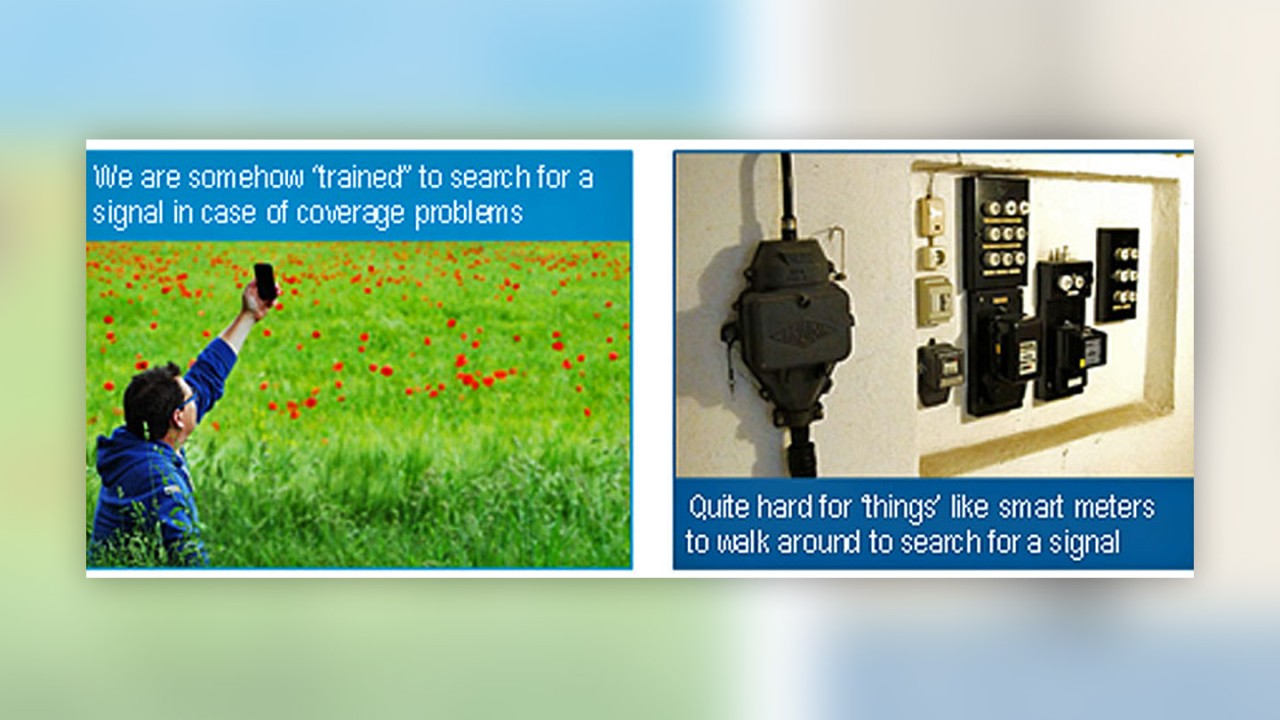Written by Arnd Sibila | June 22, 2017


The Internet of Things (IoT) and even more so the Internet of Everything (IoE) will significantly affect all industries and, ultimately, everyone’s daily routine. Expectations on the reliability, performance, quality of experience (QoE), and longevity of IoT devices are extremely high, and wireless connectivity will become a critical success factor for IoT/IoE. Use cases are virtually unlimited, including smart homes and buildings, wearables and smart fabrics, healthcare, telematics, smart cities, smart factories, and so on.
Some IoT applications, requiring global coverage and mobility, will focus on cellular technologies (mostly in licensed frequency bands), especially current 4G technologies, such as LTE-M and NB-IoT, and future 5G technologies. Other applications will rely on LP-WAN (low power wide area networks), for example, Sigfox or LoRaWAN that use unlicensed frequency bands such as the ISM/SRD bands. The majority of IoT devices, however, will use non-cellular, short-range wireless technologies, such as Bluetooth®, WLAN/Wi-Fi, ZigBee, Thread, and so on. They, too, operate in unlicensed ISM/SRD bands.
Cellular Internet of Things developments by the 3GPP
The majority of today’s cellular IoT devices utilize second-generation mobile communications technologies, for example, GPRS. Because LTE is primarily optimized for the mobile broadband market, IoT has generated little demand for the 4G technology up to now. Moreover, compared to a GSM modem, LTE modems are still relatively expensive. Nevertheless, some aspects of LTE make it increasingly attractive for the Internet of Things, for example:
- improved global coverage
- long-term availability
- technological advantages concerning spectral efficiency, latency, and data throughput
Early on, the industry recognized the need for optimized solutions for the IoT market and developed specific improvements for machine-type communications (MTC). For example, the 3GPP Releases 10 and 11 introduced features to protect the mobile network from overloading as a result of the many IoT devices (SIMTC: System Improvements to MTC; NIMTC: Network Improvements for MTC).


With machine type communications enhancements (MTCe) and low-cost LTE (LC-LTE), Release 12 introduced optimized solutions to address the main requirements of IoT devices – namely low data traffic, low power consumption, and low costs – and announced:
- a power-saving mode (PSM), suited for sensor networks that only rarely need to send data to the device;
- and a new LTE device category (Cat 0) that supposedly only has 50% of a Cat 1 modem’s complexity, since the supported data rate is reduced to 1 Mbps and full-duplex mode and multiple antennas are eliminated.
Narrowband Internet of Things
With Release 13, eMTC, also called LTE-M, was introduced. The enhancement includes additional cost reduction measures – especially lower bandwidths in the uplink and downlink –, lower data rates, and reduced transmit power. An extension of the DRX timer in idle and connected mode provides a significantly longer battery life of up to several years.
With the introduction of a new radio interface called Narrowband Internet of Things (NB-IoT), Release 13 also addressed the extremely low-cost requirements of the IoT market. NB-IoT occupies less than 200 kHz of the spectrum and can be deployed in-band by reusing free LTE resource blocks. It can also be used in the guard band of LTE carriers and standalone in free spectrum parts (e.g., in free GSM spectrum). The intention is to reuse features and functions already available in LTE.
There is also a need to improve the range for applications involving smart meters that are installed under extreme receive conditions, for example, in basements; or for devices that are widely dispersed, for example, agricultural applications. Various techniques, including multiple repetitions of data or less stringent time and error requirements, should provide significant improvements. For better propagation, frequency bands below 1GHz (690 to 960 MHz) will be used.
In Release 14, we can expect additional improvements and optimizations to address the mission-critical IoT market, for example, by further reducing latency or enabling vehicle-to-vehicle (V2V) communications. These activities will also pave the way to 5G, which requires extremely low latency, very long battery life, and an enormous number of devices.
The Internet of Things coverage challenge
Throughout a machine-to-machine (M2M) communications device’s product lifecycle, the testing of the overall communications behavior plays an important role. Testing ensures proper functionality and lifetime quality and performance. In testing mobile networks, the key question concerns network coverage.


As human users of mobile networks, we intuitively search for locations with better coverage (for example, by moving closer to a window). A smart meter in the basement, however, cannot do that.
To support the planning and deployment of new NB-IoT networks, the following tasks are essential:
- Tuning coverage models used in network planning tools
- Validating co-existence with existing networks (NB-IoT vs. LTE/GSM)
- Verifying general coverage and project or use case-specific coverage
- Troubleshooting in case of bad performance (QoS, QoE)
- Benchmarking to compare NB-IoT network coverage and other KPIs
All these tasks drive the need for an NB-IoT coverage test solution. And customers expect NB-IoT measurements to be performed with a scanner to test RF conditions for reliable connections, even in below-ground indoor environments.
Network scanners help overcome the coverage challenge
A typical coverage measurement solution consists of a network scanner. This passive device reliably measures RF parameters by simply monitoring the air interface. It is important to complement this test solution with real NB-IoT user equipment so as to also evaluate the interactions with the network (in terms of protocol, attach, detach, send/receive data, etc.).





